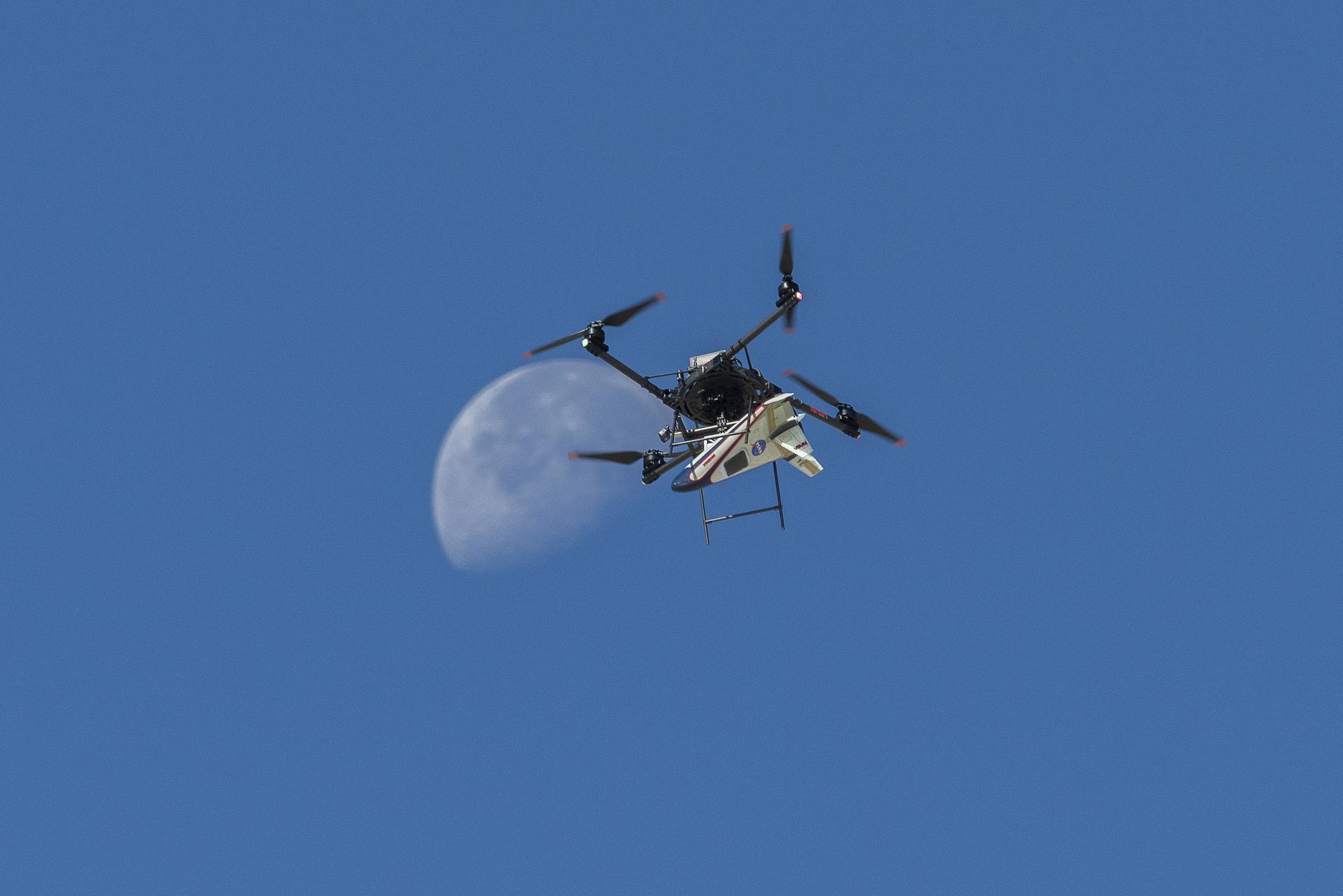13.12.2024
The most effective way to prove a new idea is to start small, test, learn, and test again. A team of researchers developing an atmospheric probe at NASA’s Armstrong Flight Research Center in Edwards, California, are taking that approach. The concept could offer future scientists a potentially better and more economical way to collect data on other planets.
The latest iteration of the atmospheric probe flew after release from a quad-rotor remotely piloted aircraft on Oct. 22 above Rogers Dry Lake, a flight area adjacent to NASA Armstrong. The probe benefits from NASA 1960s research on lifting body aircraft, which use the aircraft’s shape for lift instead of wings. Testing demonstrated the shape of the probe works.
“I’m ecstatic,” said John Bodylski, atmospheric probe principal investigator at NASA Armstrong. “It was completely stable in flight. We will be looking at releasing it from a higher altitude to keep it flying longer and demonstrate more maneuvers.”

Starting with a Center Innovation Fund award in 2023, Bodylski worked closely with the center’s Dale Reed Subscale Flight Research Laboratory to design and build three atmospheric probe models, each vehicle 28 inches long from nose to tail. One model is a visual to show what the concept looks like, while two additional prototypes improved the technology’s readiness.
The road to the successful flight wasn’t smooth, which is expected with any new flight idea. The first flight on Aug. 1 didn’t go as planned. The release mechanism didn’t work as expected and air movement from the quad rotor aircraft was greater than anticipated. It was that failure that inspired the research team to take another look at everything about the vehicle, leading to many improvements, said Justin Hall, NASA Armstrong chief pilot of small, unmanned aircraft systems.
Fast forward to Oct. 22, where the redesign of the release mechanism, in addition to an upside-down release and modified flight control surfaces, led to a stable and level flight. “Everything we learned from the first vehicle failing and integrating what we learned into this one seemed to work well,” Hall said. “This is a win for us. We have a good place to go from here and there’s some more changes we can make to improve it.”

Bodylski added, “We are going to focus on getting the aircraft to pull up sooner to give us more flight time to learn more about the prototype. We will go to a higher altitude [this flight started at 560 feet altitude] on the next flight because we are not worried about the aircraft’s stability.”
When the team reviewed flight photos and video from the Oct. 22 flight they identified additional areas for improvement. Another atmospheric probe will be built with enhancements and flown. Following another successful flight, the team plans to instrument a future atmospheric probe that will gather data and improve computer models. Data gathering is the main goal for the current flights to give scientists confidence in additional probe shapes for atmospheric missions on other planets.
If this concept is eventually chosen for a mission, it would ride on a satellite to its destination. From there, the probe would separate as the parent satellite orbits around a planet, then enter and dive through the atmosphere as it gathers information for clues of how the solar system formed.



